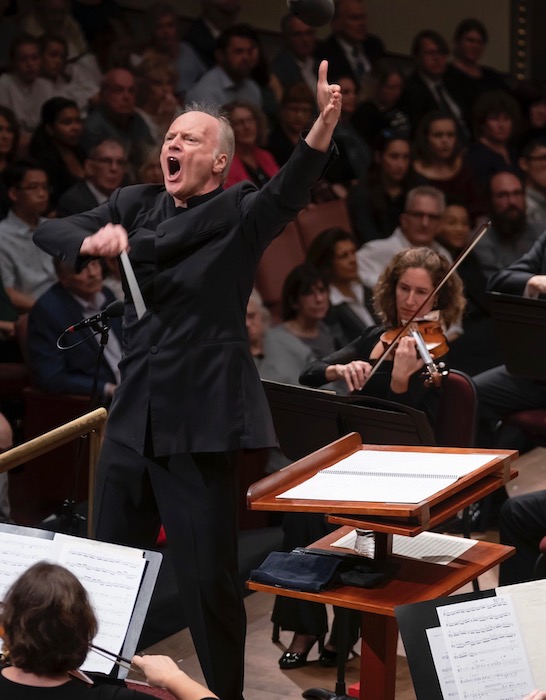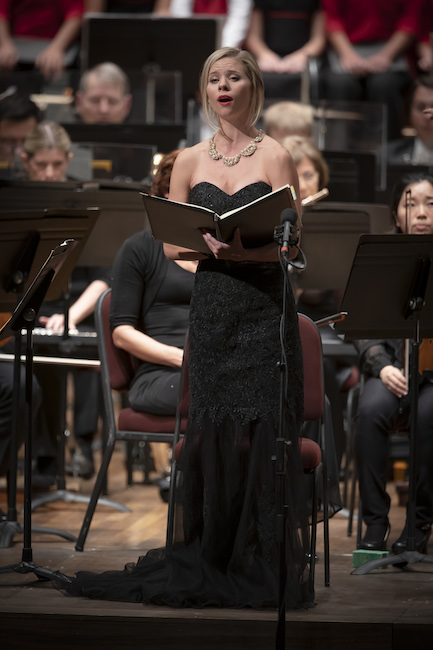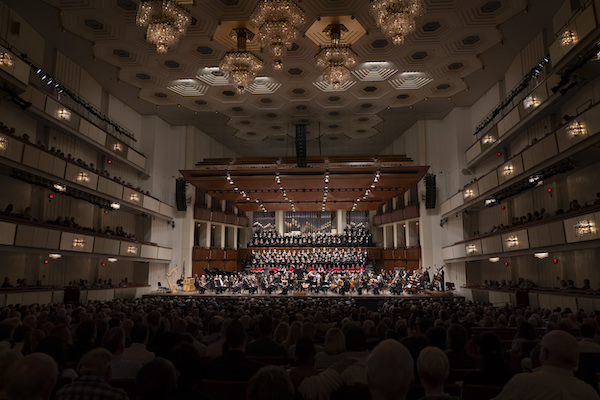Noseda, NSO go from the sacred to the profane with panache

Pious devotion and depraved dissipation sit shoulder to shoulder in Gianandrea Noseda’s first subscription concerts of the National Symphony Orchestra season. With a wink the Italian conductor, who embarked last week on his third year with the ensemble, acknowledged that the evening’s music was all composed in the 20th century. The sizable audience in the Kennedy Center Concert Hall Thursday night did not seem to mind.
As an introduction to Carl Orff’s ubiquitous Carmina Burana, Noseda offered two works with a calmer, more solemn tone, both played by the NSO for the first time. Jennifer Higdon dedicated her elegiac orchestral work blue cathedral to the memory of her younger brother, Andrew Blue Higdon. Tinkling metallic sounds permeate the work. Expected instruments like tubular bells and glockenspiel are augmented by the muted chiming of Chinese Baoding balls and tuned crystal water glasses.
Noseda carved out plenty of space for fine solos in the piece’s more intimate moments. The quartet of two cellos and two violas, which gently punctuate changes of section, drew forth longing solos from flute and clarinet, instruments played by the composer and her brother, respectively. Full orchestral climaxes were less effective in this rendition, with the string intonation not always clean.
A smaller women’s chorus drawn from the Choral Arts Society of Washington joined the string section and timpanist for Poulenc’s Litanies à la Vierge Noire. Poulenc composed the piece after a momentous visit to the shrine of the Black Virgin, atop the mountainside town of Rocamadour, in the Lot region of France. Then, as now, one can see the town’s penitents climbing the staircase on their knees, to reach the small chapel housing the beloved statue, reputed to be miraculous.
Poulenc set the text of the litany prayed in that chapel, seeking to recreate the spirit of “peasant devotion” that had so moved him during his visit. The music is appropriately austere, with chant-like melodic lines woven together in the voices, often in alternation with a somber fabric of strings. The smaller chorus was generally quite effective, well balanced but with some of the high soprano writing not sitting easily in the voices.
The proximity of this example of medieval piety only served to heighten the salacious quality of Carmina Burana. Orff set selections from the macaronic lyrics of medieval churchmen, preserved by Bavarian monks in a manuscript that revels in drunkenness and debauchery. This splashy choral work was to have been the showpiece of Noseda’s big summer launch at Wolf Trap in 2017, a plan scuttled by his back injury.
When he finally got his hands on the piece, Noseda gave the large orchestra and vast Choral Arts Society of Washington, filling all the available chorister seating, the freedom to let it rip. Even at often precipitous tempos, the chorus kept its cool, spitting out streams of words in Latin and various vernacular languages with utter clarity. Cracks appeared only when the soprano writing went to A and higher, especially when such notes had to be floated softly.

Amy Owens, who was a sensation as a substitute at that 2017 Wolf Trap concert, returned for the soprano solos. If anything her performance this time around was more assured, the perfect combination of purring, sensuous phrasing and clear-toned innocence. At the climax of the final section, the sighing coloratura escapade “Dulcissime,” Owens drew out each phrase, savoring the flight up to and around a pristine high D. She was matched demurely by the young voices of the Children’s Chorus of Washington, arranged in a single row at the front of the chorister seats.
Elliot Madore excelled in the crooning parts of the baritone solos, like “Omnia sol temperat,” but did not have quite enough force to carry across the loud orchestra in other places. The sureness of the top range did not falter up to the G-flats in the drunken abbot monologue, but above that things got dicey. Argentinian tenor Santiago Ballerini plied a ringing top to stunning effect on the roasted swan’s song, although in focusing on the beauty of tone, some of the humor was lost.
For his part, Noseda mined the piece for every exuberant detail he could find, from violent to tender and everything in between. The NSO was more than willing to oblige with a wild ruckus of sound, sometimes pushing even the massed chorus into the background.
The program will be repeated 8 p.m. Friday and Saturday. kennedy-center.org; 202-467-4600

